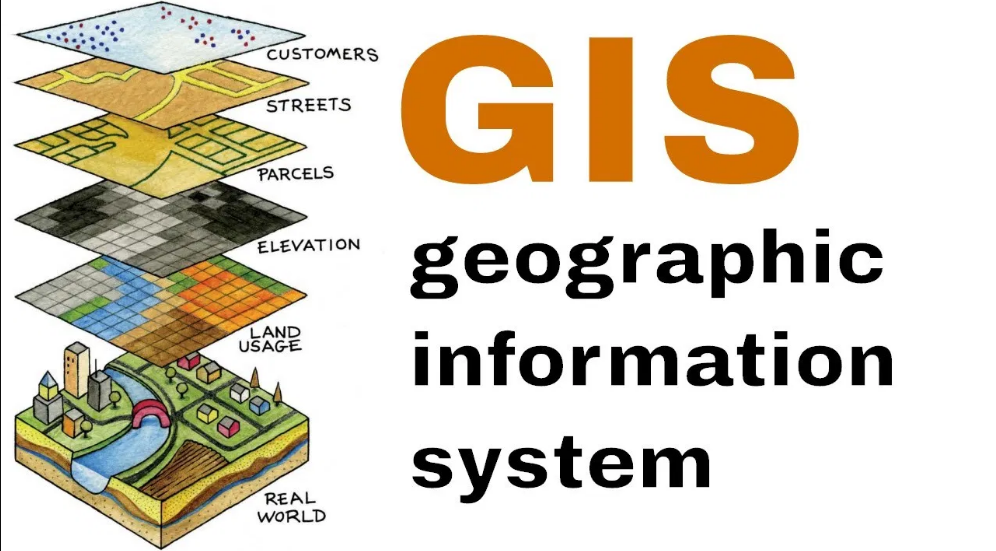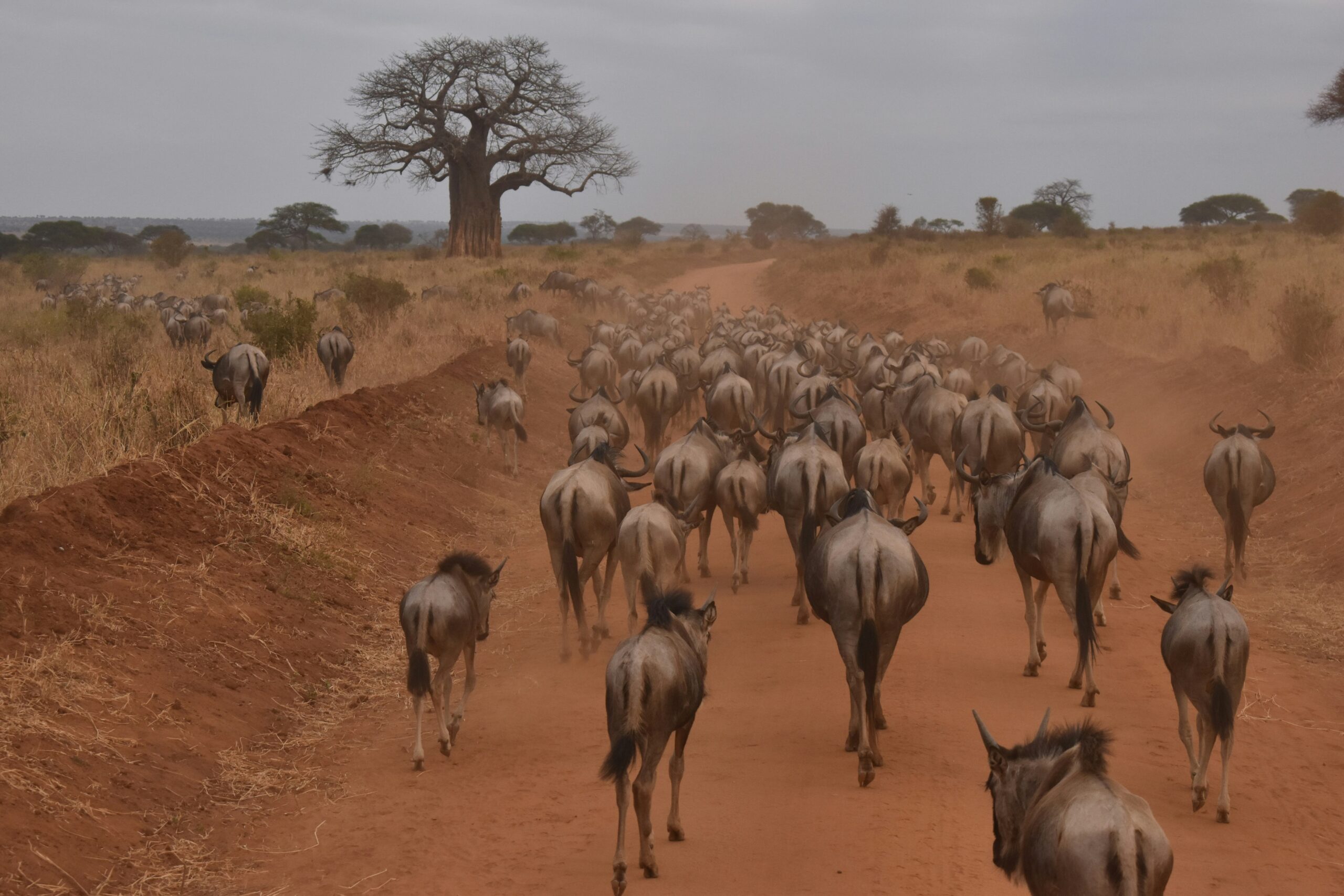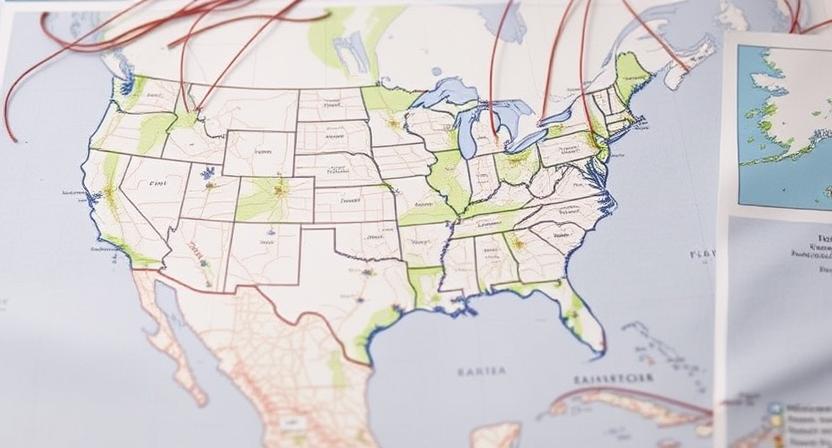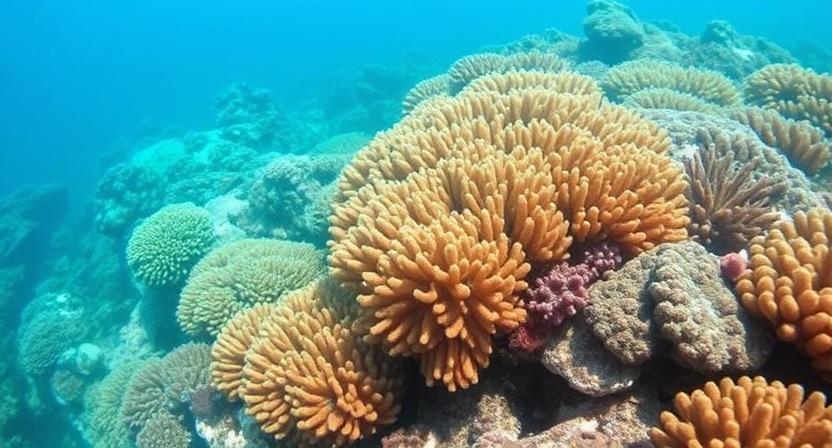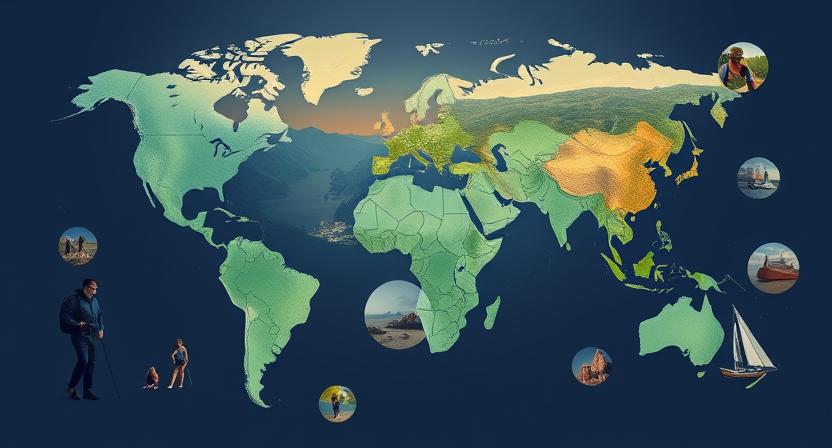
Geographical Factors that Shape Travel Trends

Geographical factors play a pivotal role in shaping travel trends around the world. The physical landscape of a destination, from the majestic mountains to serene coastlines, often dictates the type of activities and experiences that attract tourists. Travelers are drawn to regions with unique topographical features that offer opportunities for adventure and exploration. For example, mountainous areas are popular among hikers and skiing enthusiasts, while coastal regions appeal to those seeking sun, sand, and water activities.
Moreover, the climate and weather patterns of a location significantly influence travel choices. Seasonal variations impact the type of activities available to tourists, with different regions experiencing distinct peak seasons based on weather conditions. For instance, tropical destinations are often preferred during the winter months for a warm escape from cold climates, while cooler regions attract visitors during the summer for outdoor recreation. Understanding the climatic patterns of a destination helps travelers plan their trips effectively to make the most of their experiences.
• The physical landscape of a destination influences the type of activities and experiences that attract tourists
• Unique topographical features such as mountains or coastlines offer opportunities for adventure and exploration
• Mountainous areas are popular among hikers and skiing enthusiasts, while coastal regions appeal to sun-seekers
• Climate and weather patterns impact travel choices, with seasonal variations affecting available activities
• Tropical destinations are preferred during winter months for warm escapes, while cooler regions attract visitors in summer
Climate and Weather Patterns as Key Influencers
When it comes to travel choices, climate and weather patterns play a significant role in influencing tourists’ decisions. The appeal of warm, sunny beaches in tropical locations attracts many travelers seeking relaxation and leisure activities. On the other hand, adventurous individuals may opt for destinations with a diverse range of climates, offering opportunities for activities such as skiing, hiking, or exploring unique ecosystems.
Additionally, extreme weather conditions like hurricanes, monsoons, or snowstorms can greatly impact travel plans and safety considerations. Travelers often prioritize destinations with stable and predictable weather patterns to avoid disruptions in their itineraries. The ability to plan outdoor activities, sightseeing tours, and cultural experiences is heavily influenced by the prevailing climate and weather conditions of a particular region.
• Travelers often choose destinations with warm, sunny beaches for relaxation and leisure activities
• Adventurous individuals prefer locations with diverse climates for activities like skiing, hiking, or exploring unique ecosystems
• Extreme weather conditions such as hurricanes, monsoons, or snowstorms can disrupt travel plans and safety considerations
• Stability and predictability of weather patterns are key factors in choosing a destination for travelers to plan outdoor activities and sightseeing tours
Topographical Features and Their Impact on Travel Destinations
Travel destinations around the world are greatly influenced by topographical features. The diverse landscapes, ranging from towering mountains to picturesque coastlines, offer unique experiences for travelers. Mountainous regions attract adventure seekers looking for hiking and skiing opportunities, while coastal areas appeal to those seeking relaxation and water-based activities.
The presence of rivers and lakes in certain destinations provides opportunities for water sports and scenic boating excursions. Deserts, with their vast sand dunes and unique flora and fauna, draw in curious travelers interested in experiencing a different kind of environment. The topography of a region plays a crucial role in shaping the activities available to tourists and the overall appeal of a destination.
• Mountainous regions offer hiking and skiing opportunities
• Coastal areas appeal to those seeking relaxation and water-based activities
• Rivers and lakes provide opportunities for water sports and boating excursions
• Deserts attract travelers interested in unique flora, fauna, and sand dunes
Cultural Diversity and its Influence on Travel Choices
Cultural diversity is a powerful factor influencing travel choices around the world. Travelers are increasingly drawn to destinations that offer rich and distinct cultural experiences, where they can immerse themselves in traditions, languages, cuisines, and lifestyles different from their own. The allure of exploring diverse cultures and interacting with local communities plays a significant role in shaping travel trends and preferences. Tourists seek authentic encounters that allow them to broaden their perspectives and gain a deeper appreciation for the diverse ways in which people live and express their identities.
The influence of cultural diversity on travel choices is evident in the popularity of destinations that celebrate their unique heritage and traditions. Tourists are often attracted to cultural festivals, historical sites, museums, and art performances that showcase the vibrancy and richness of a particular culture. Whether it’s exploring ancient temples in Asia, experiencing traditional dances in Africa, or savoring regional delicacies in Europe, travelers are motivated by the opportunity to engage with diverse cultures and learn more about the world’s intricacies and beauty. Cultural diversity not only adds color and depth to the travel experience but also fosters mutual understanding and respect among people from different backgrounds.
• Travelers are increasingly drawn to destinations that offer rich and distinct cultural experiences
• Immersion in traditions, languages, cuisines, and lifestyles different from their own is a key factor
• Authentic encounters with local communities allow for broadening perspectives and gaining appreciation for diverse ways of life
• Popular destinations often celebrate unique heritage through cultural festivals, historical sites, museums, and art performances
• Engaging with diverse cultures fosters mutual understanding and respect among people from different backgrounds
Accessibility and Transportation Options in Different Regions
Accessibility and transportation options play a crucial role in determining the ease and convenience of travel to different regions around the world. The availability of well-connected airports, efficient public transportation systems, and well-maintained roads significantly impact the accessibility of a destination. For instance, major cities with extensive subway networks and reliable bus services tend to attract more tourists due to the convenience of getting around easily and exploring various attractions within the city.
In contrast, remote or inaccessible regions with limited transportation options may struggle to attract as many visitors despite their potential appeal. Travelers often prioritize destinations that offer seamless connectivity and hassle-free transportation options, as it enhances their overall travel experience and allows them to make the most of their time exploring new places. Additionally, the affordability and reliability of transportation services also influence tourists’ decisions when choosing their travel destinations.
• Well-connected airports, efficient public transportation systems, and well-maintained roads are crucial for accessibility
• Major cities with extensive subway networks and reliable bus services tend to attract more tourists
• Remote or inaccessible regions with limited transportation options may struggle to attract visitors
• Seamless connectivity and hassle-free transportation options enhance travelers’ overall experience
• Affordability and reliability of transportation services influence tourists’ decisions on travel destinations
Natural Wonders and Their Allure for Tourists

Natural wonders hold a mesmerizing appeal for travelers worldwide. From the towering peaks of the Himalayas to the breathtaking vistas of the Grand Canyon, these awe-inspiring creations of nature captivate tourists with their sheer magnificence. The allure of exploring these unique landscapes draws adventurers seeking a deeper connection with the beauty and power of the natural world.
These wonders serve as powerful reminders of the Earth’s astonishing diversity and complexity. The vibrant colors of the Great Barrier Reef’s marine life and the surreal beauty of Iceland’s geothermal springs beckon visitors to witness firsthand the wonders of our planet. The sense of wonder and discovery experienced when encountering these natural marvels leaves an indelible impression, inspiring a sense of humility and reverence for the world’s natural splendor.
– The towering peaks of the Himalayas offer a majestic backdrop for trekkers and mountaineers
– The breathtaking vistas of the Grand Canyon provide a stunning display of geological formations
– The vibrant colors of the Great Barrier Reef’s marine life create an underwater paradise
– Iceland’s geothermal springs showcase nature’s raw power and beauty
Historical Significance of Locations in Shaping Travel Trends
Historical significance plays a pivotal role in influencing travel trends around the world. Destinations with rich historical backgrounds often attract tourists seeking to immerse themselves in the stories and events of the past. The allure of exploring ancient ruins, centuries-old landmarks, and iconic historical sites contributes significantly to the decision-making process of travelers when choosing their next vacation spot.
The appeal of visiting locations steeped in history lies in the opportunity to witness firsthand the remnants of past civilizations and to gain a deeper understanding of cultural heritage. These historical sites serve as windows to the past, allowing visitors to connect with the traditions, customs, and legacies of bygone eras. Travelers are drawn to destinations that offer a glimpse into history, providing them with a sense of enrichment and appreciation for the historical significance that shapes these locations.
• Historical significance influences travel trends globally
• Rich historical backgrounds attract tourists seeking immersion in the past
• Exploring ancient ruins, landmarks, and sites is a major draw for travelers
• Visiting locations steeped in history offers firsthand glimpse of past civilizations
• Historical sites serve as windows to the past, connecting visitors with cultural heritage
Economic Factors that Drive Tourist Choices
When planning their next vacation, tourists often weigh various economic factors that can influence their choices. The cost of travel, including airfare, accommodation, and daily expenses, plays a significant role in determining the destinations that travelers opt for. Tourists seek destinations that offer value for their money, where they can enjoy experiences that fit within their budget constraints. Additionally, economic stability and exchange rates can impact tourists’ decisions, as favorable exchange rates can make a destination more attractive for visitors from countries with stronger currencies.
Furthermore, the availability of diverse tourism offerings at different price points can cater to a wide range of tourists with varying budgets. Destinations that offer a mix of luxury and budget-friendly accommodations, dining options, and activities can attract a more diverse audience. The presence of affordable transportation options, such as public transit or budget airlines, can also make a destination more accessible and appealing to budget-conscious travelers. As such, economic factors play a crucial role in shaping tourists’ choices and influencing the overall tourism landscape.
• Tourists consider the cost of travel, including airfare and accommodation, when choosing a destination
• Economic stability and exchange rates can impact tourists’ decisions
• Diverse tourism offerings at different price points attract a wide range of tourists
• Affordable transportation options make a destination more accessible to budget-conscious travelers
Political Stability and its Role in Destination Selection
Political stability plays a crucial role in the decision-making process when selecting a travel destination. Tourists are naturally inclined to choose destinations that are politically stable, as they offer a sense of security and peace of mind during their stay. Countries facing political unrest or instability often see a decline in tourism, as travelers are hesitant to visit places where their safety and well-being may be at risk.
Furthermore, political stability can also impact a country’s overall image and reputation in the eyes of potential visitors. Destinations known for their stable political climate are more likely to attract tourists looking for a hassle-free and enjoyable travel experience. Governments that prioritize stability and security not only foster a positive environment for their citizens but also create an inviting atmosphere for tourists seeking a memorable and stress-free vacation.
• Tourists prefer politically stable destinations for a sense of security and peace of mind
• Countries facing political unrest often experience a decline in tourism
• Political stability can impact a country’s overall image and reputation
• Destinations with stable political climates are more likely to attract tourists seeking enjoyable travel experiences
• Governments that prioritize stability create an inviting atmosphere for tourists
Environmental Sustainability and its Growing Importance in Travel
As travelers become more conscious of their impact on the environment, environmental sustainability has emerged as a critical factor in shaping travel decisions. From reducing carbon footprints to opting for eco-friendly accommodations, tourists are increasingly prioritizing destinations that promote responsible and sustainable practices. This shift is not only driven by ethical considerations but also by a desire to experience and preserve the natural beauty of the places they visit.
As a result, destinations that showcase strong environmental stewardship and conservation efforts are gaining popularity among travelers seeking authentic and environmentally-friendly experiences. From national parks that prioritize conservation to eco-tourism initiatives that promote sustainable practices, travelers are drawn to locations that demonstrate a commitment to preserving the natural world. Incorporating elements of environmental sustainability into travel experiences not only benefits the environment but also enriches the overall journey, fostering a deeper connection between travelers and the destinations they explore.
• Travelers are increasingly prioritizing destinations that promote responsible and sustainable practices
• Destinations showcasing strong environmental stewardship are gaining popularity
• National parks and eco-tourism initiatives that prioritize conservation are attractive to travelers
• Incorporating elements of environmental sustainability enriches the overall travel experience
Local Cuisine and Culinary Experiences as Travel Motivators

Many travelers are driven by the desire to explore new tastes and flavors when visiting different regions around the world. The local cuisine plays a significant role in attracting tourists and can often be a key motivator for choosing a particular destination. From street food stalls offering authentic delicacies to fine dining restaurants showcasing traditional dishes, culinary experiences can enhance a traveler’s exploration and appreciation of a culture.
Sampling local dishes not only provides a sensory experience but also allows tourists to connect with the history and traditions of a place through food. Whether it’s savoring a bowl of steaming pho in Vietnam or indulging in a hearty plate of paella in Spain, the diversity of flavors and ingredients can give insights into the local way of life and create lasting memories for travelers. As food becomes a prominent aspect of travel experiences, destinations that offer a rich culinary heritage are increasingly sought after for their unique gastronomic offerings.
• Exploring local markets and trying fresh produce can give travelers a glimpse into the agricultural practices of a region
• Participating in cooking classes or food tours can provide hands-on experiences and deeper understanding of traditional recipes
• Sampling street food allows visitors to interact with locals and discover hidden culinary gems off the beaten path
• Visiting vineyards, breweries, or distilleries for tastings can showcase the artisanal craftsmanship behind popular beverages in different regions.
Language Barriers and their Impact on Tourist Behavior
When visiting a foreign country, language barriers can significantly impact tourist behavior. In instances where tourists cannot effectively communicate with locals due to language differences, they may feel frustrated and isolated. This can lead to missed opportunities to fully immerse themselves in the local culture, interact with residents, and understand the nuances of the destination they are exploring.
Moreover, language barriers can affect tourists’ ability to navigate their surroundings, obtain necessary information, and make informed decisions. Without the ability to effectively communicate, tourists may struggle to ask for directions, order meals, seek assistance in emergencies, or engage in meaningful conversations with locals. As a result, language barriers not only limit the overall travel experience but can also impact tourists’ safety, satisfaction, and overall enjoyment of their trip.
• Tourists may feel frustrated and isolated when they cannot effectively communicate with locals
• Missed opportunities to fully immerse themselves in the local culture
• Difficulty in interacting with residents and understanding the nuances of the destination
• Language barriers can affect tourists’ ability to navigate their surroundings
• Struggle to obtain necessary information and make informed decisions
• Difficulty in asking for directions, ordering meals, seeking assistance in emergencies, or engaging in meaningful conversations with locals
Safety and Security Concerns in Choosing Travel Destinations
Safety and security are paramount considerations for travelers when selecting their destinations. The perception of a location’s safety can greatly influence a tourist’s decision to visit. Instances of political instability, high crime rates, or natural disasters can deter even the most adventurous travelers from exploring certain areas. In today’s interconnected world, news of safety concerns spreads rapidly through social media and other channels, affecting travel trends and choices.
Tourists also consider the level of security measures in place at their chosen destinations. The presence of visible security personnel, well-maintained infrastructure, and efficient emergency response systems can instill confidence in visitors. Travelers are increasingly seeking destinations that prioritize the safety and well-being of guests, leading to a shift in preferences towards locations with strong safety protocols in place.
• Travelers prioritize safety and security when choosing destinations
• Perception of safety influences travel decisions
• Political instability, high crime rates, and natural disasters can deter tourists
• News of safety concerns spreads quickly through social media
• Security measures at destinations impact visitor confidence
• Visible security personnel, well-maintained infrastructure, and efficient emergency response systems are valued by travelers
• Preference shifting towards locations with strong safety protocols in place
Religious and Spiritual Sites as Popular Tourist Attractions
Religious and spiritual sites hold a special allure for tourists seeking to immerse themselves in the cultural and historical significance of a destination. These sacred places offer visitors a unique glimpse into the beliefs, traditions, and practices of local communities, providing a profound and enriching travel experience. Whether exploring ancient temples, majestic cathedrals, or peaceful monasteries, tourists are drawn to these sites not just for their architectural beauty, but also for the spiritual and emotional connections they evoke.
Pilgrimage tourism is a growing trend among travelers seeking personal growth, reflection, and a deeper connection to their faith. Religious and spiritual sites provide a sense of tranquility and contemplation, allowing visitors to escape the hustle and bustle of daily life and connect with something larger than themselves. Whether it’s the serene atmosphere of a Buddhist monastery in the mountains or the grandeur of a mosque in a bustling city, these sites offer a sanctuary for spiritual seekers and curious travelers alike.
• Religious and spiritual sites offer a unique glimpse into local beliefs and traditions
• Tourists are drawn to these sites for their architectural beauty and emotional connections
• Pilgrimage tourism is on the rise among travelers seeking personal growth and reflection
• These sites provide a sense of tranquility, allowing visitors to escape daily life
• Whether it’s a Buddhist monastery or grand mosque, these sites offer sanctuary for spiritual seekers
Urban vs. Rural Destinations: Contrasting Travel Trends
Urban destinations and rural destinations offer travelers contrasting experiences that cater to different preferences and interests. Urban areas are bustling with energy, offering a wide array of entertainment, shopping, dining, and cultural experiences. Travelers seeking vibrant nightlife, diverse cuisines, historical landmarks, and modern amenities often gravitate towards urban destinations for their dynamic and fast-paced environment. On the other hand, rural destinations provide a serene escape from the hustle and bustle of city life, offering breathtaking natural landscapes, tranquil settings, and opportunities for outdoor activities such as hiking, camping, and wildlife exploration. Travelers looking for peaceful retreats, authentic cultural encounters, and a connection to nature often opt for rural destinations to unwind and rejuvenate.
• Urban destinations offer a wide array of entertainment options such as theaters, concerts, and museums.
• Rural destinations provide opportunities for outdoor activities like hiking, fishing, and birdwatching.
• Urban areas are known for their diverse culinary scene with restaurants offering cuisines from around the world.
• Rural destinations often showcase local cuisine made with fresh ingredients sourced from nearby farms.
• Urban destinations boast iconic landmarks and architectural marvels that attract history buffs and sightseers.
Seasonal Variations in Travel Preferences

During the summer months, many travelers opt for beach destinations to enjoy the warm weather and relax by the ocean. Popular coastal regions often experience an influx of tourists seeking sun, sand, and sea. On the other hand, winter travelers may gravitate towards snowy destinations for activities such as skiing and snowboarding. Mountain resorts and alpine townships see a peak in visitors during the colder months as enthusiasts seek out winter sports and cozy mountain getaways.
In the spring and fall seasons, travelers may be drawn to destinations with mild weather and beautiful changing landscapes. These transitional seasons are ideal for exploring natural attractions such as national parks, gardens, and countryside retreats. Additionally, cultural festivals and events often take place during these times, attracting visitors interested in immersing themselves in local traditions and customs.
• During the summer months, beach destinations are popular for travelers seeking sun and relaxation
• Winter travelers often choose snowy destinations for skiing and snowboarding
• Spring and fall seasons attract travelers to destinations with mild weather and changing landscapes
• Transitional seasons are ideal for exploring natural attractions like national parks and gardens
• Cultural festivals during spring and fall offer opportunities to experience local traditions
Health and Medical Facilities Influence on Travel Choices
When travelers plan their next adventure, the availability and quality of health and medical facilities in a destination hold significant weight in their decision-making process. Access to medical services, including hospitals, clinics, pharmacies, and emergency care, can greatly influence the perceived safety and security of a place. In the event of unforeseen health issues or emergencies, having reliable medical facilities nearby can provide peace of mind to travelers and impact their overall experience positively.
Moreover, the standard of healthcare in a destination can determine the level of comfort and convenience for travelers. High-quality medical facilities may attract tourists seeking reassurance that their health needs will be adequately met during their stay. On the other hand, destinations with limited or subpar healthcare services may deter some travelers who prioritize access to comprehensive medical care while away from home.
• Access to medical services is a crucial factor for travelers when choosing a destination
• Reliable medical facilities can enhance the perceived safety and security of a place
• Quality healthcare in a destination can impact the overall experience of travelers positively
• High-quality medical facilities may attract tourists seeking reassurance about their health needs
• Limited or subpar healthcare services in a destination may deter some travelers
Social Media and Technology’s Role in Shaping Travel Trends
Social media and technology have revolutionized the way people plan and experience their travels. Platforms like Instagram, Facebook, and Twitter provide travelers with visual inspiration, real-time updates, and firsthand reviews from fellow globetrotters. Through social media, individuals can discover hidden gems, trendy hotspots, and off-the-beaten-path destinations that were once only known to locals.
Furthermore, technology has made travel more convenient and efficient. Mobile apps and travel websites offer booking options, itinerary planning tools, language translation services, and virtual tours. With just a few taps on their smartphones, travelers can access maps, recommendations, and instant communication with locals, making navigating foreign territories a breeze. Additionally, advancements like virtual reality and augmented reality are transforming the way travelers research and preview their destinations, offering immersive experiences that fuel wanderlust and shape travel preferences.
• Social media platforms like Instagram, Facebook, and Twitter provide visual inspiration for travelers
• Real-time updates and firsthand reviews from fellow globetrotters help in trip planning
• Discover hidden gems, trendy hotspots, and off-the-beaten-path destinations through social media
• Mobile apps and travel websites offer booking options, itinerary planning tools, language translation services, and virtual tours for convenience
• Access maps, recommendations, and instant communication with locals with just a few taps on smartphones
• Virtual reality and augmented reality are transforming the way travelers research and preview destinations
Emerging Destinations and Changing Travel Patterns
As travel preferences evolve and tourists become more adventurous, emerging destinations are capturing the attention of travelers worldwide. These lesser-known locations offer unique experiences, allowing visitors to explore untapped landscapes, immerse themselves in diverse cultures, and create lasting memories off the beaten path. With social media platforms fueling wanderlust and showcasing hidden gems, travelers are increasingly looking beyond traditional tourist hotspots to discover new and exciting destinations.
The changing travel patterns reflect a shift towards seeking authenticity, sustainability, and immersive experiences. Travelers are prioritizing responsible tourism practices, engaging with local communities, and supporting eco-friendly initiatives. This trend is reshaping the tourism industry, encouraging destinations to prioritize environmental conservation, cultural preservation, and community well-being. As travelers become more conscious of their impact, emerging destinations offer a refreshing alternative that aligns with their values and desire for meaningful travel experiences.
• Emerging destinations offer unique experiences for travelers to explore untapped landscapes
• Social media platforms fuel wanderlust and showcase hidden gems in lesser-known locations
• Changing travel patterns reflect a shift towards seeking authenticity, sustainability, and immersive experiences
• Travelers prioritize responsible tourism practices, engaging with local communities, and supporting eco-friendly initiatives
• The trend is reshaping the tourism industry to prioritize environmental conservation, cultural preservation, and community well-being
Future Trends in Travel Influenced by Geography
In the realm of travel, geographical factors play a pivotal role in shaping future trends. As travelers grow more adventurous and seek out unique experiences, remote and lesser-known destinations are expected to gain popularity. Places off the beaten path with stunning natural landscapes and rich cultural heritage are likely to appeal to those looking for authentic and meaningful travel experiences.
Additionally, as concerns about environmental sustainability continue to rise, travelers are expected to show a preference for eco-friendly destinations that promote conservation efforts and minimize their carbon footprint. Destinations that prioritize sustainable tourism practices, such as supporting local communities and preserving natural resources, are anticipated to attract a growing number of conscientious travelers seeking to make a positive impact through their journeys.
• Travelers are seeking out unique experiences in remote and lesser-known destinations
• Places with stunning natural landscapes and rich cultural heritage will gain popularity
• Authentic and meaningful travel experiences are becoming more desirable
• There is a growing preference for eco-friendly destinations among travelers
• Conservation efforts and minimizing carbon footprint are important factors
• Destinations that prioritize sustainable tourism practices will attract conscientious travelers




